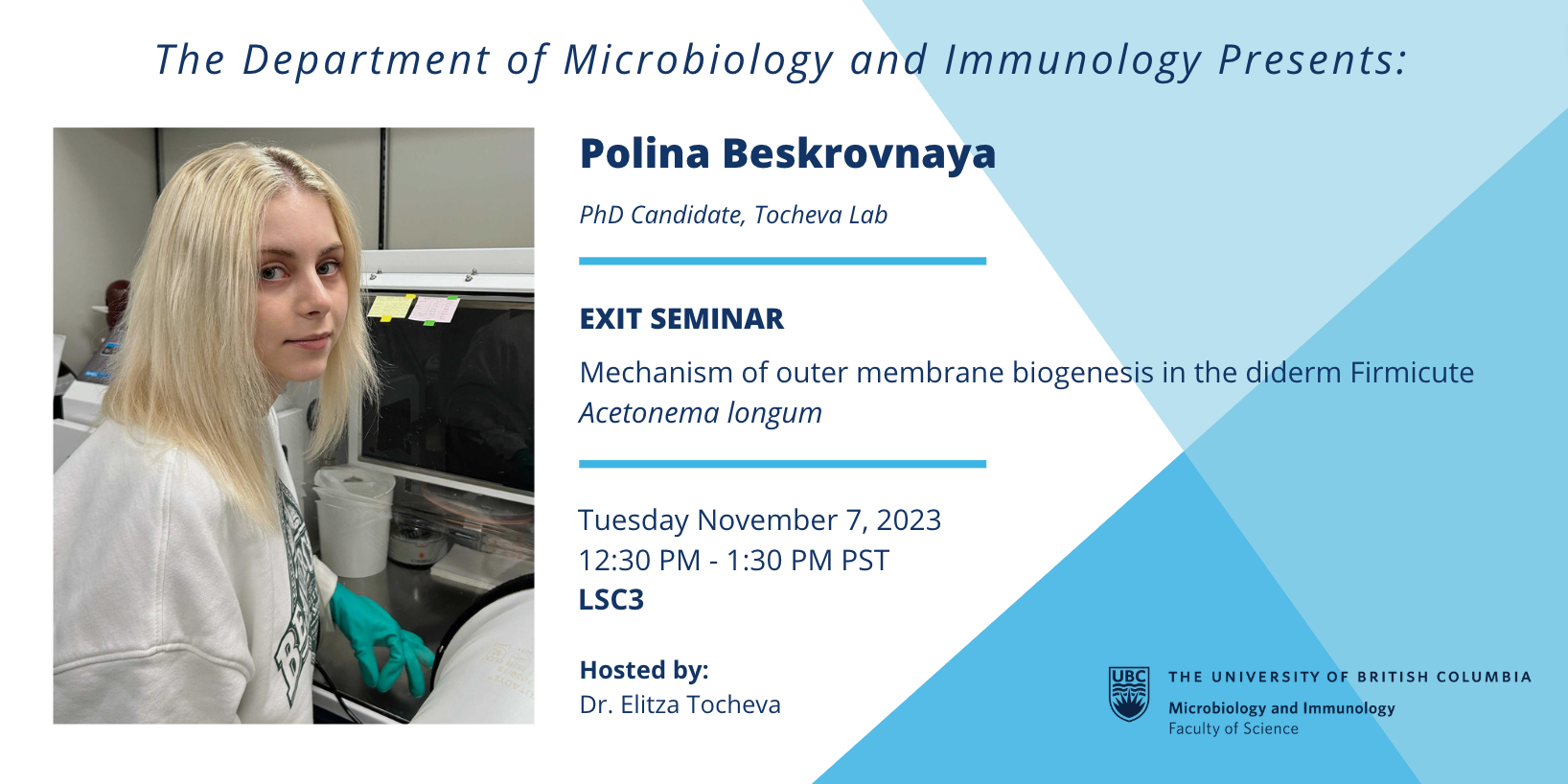
Seminar Title: Mechanism of outer membrane biogenesis in the diderm Firmicute Acetonema longum
Seminar Abstract: Endospore formation is a complex bacterial stress response strategy that involves asymmetric division to produce a dormant daughter cell capable of withstanding heat, desiccation, ultraviolet radiation and other extreme environmental conditions. Although traditionally attributed to the monoderm bacteria of the phylum Firmicutes, this process has also been recently discovered in diderms, including the Negativicute Acetonema longum. Cryo-electron tomography studies further revealed that both monoderms and diderms produce a diderm spore intermediate. Its surrounding bilayers, termed the inner (IsM) and outer (OsM) spore membrane, are derived from the inner membrane (IM) of the mother cell and thus hypothesized to be IM-like. Strikingly, while spores of monoderms, such as Bacillus, shed the OsM upon germination, diderm organisms instead remodel the OsM into a true outer membrane (OM), hallmarked by asymmetric lipid leaflets and integral beta-barrel proteins, via uncharacterized and potentially novel pathways. Negativicutes like A. longum may represent an evolutionary missing link between the traditional monoderm and diderm bacteria, necessitating the elucidation of this new type of OM biogenesis. Here, we rely on a combination of biochemical and high-resolution imaging approaches to holistically analyze the molecular mechanisms of OsM remodelling.
Life Sciences Centre, LSC 3 - 2350 Health Sciences Mall MBIM itsupport@microbiology.ubc.ca America/Vancouver publicSeminar Title: Mechanism of outer membrane biogenesis in the diderm Firmicute Acetonema longum
Seminar Abstract: Endospore formation is a complex bacterial stress response strategy that involves asymmetric division to produce a dormant daughter cell capable of withstanding heat, desiccation, ultraviolet radiation and other extreme environmental conditions. Although traditionally attributed to the monoderm bacteria of the phylum Firmicutes, this process has also been recently discovered in diderms, including the Negativicute Acetonema longum. Cryo-electron tomography studies further revealed that both monoderms and diderms produce a diderm spore intermediate. Its surrounding bilayers, termed the inner (IsM) and outer (OsM) spore membrane, are derived from the inner membrane (IM) of the mother cell and thus hypothesized to be IM-like. Strikingly, while spores of monoderms, such as Bacillus, shed the OsM upon germination, diderm organisms instead remodel the OsM into a true outer membrane (OM), hallmarked by asymmetric lipid leaflets and integral beta-barrel proteins, via uncharacterized and potentially novel pathways. Negativicutes like A. longum may represent an evolutionary missing link between the traditional monoderm and diderm bacteria, necessitating the elucidation of this new type of OM biogenesis. Here, we rely on a combination of biochemical and high-resolution imaging approaches to holistically analyze the molecular mechanisms of OsM remodelling.

